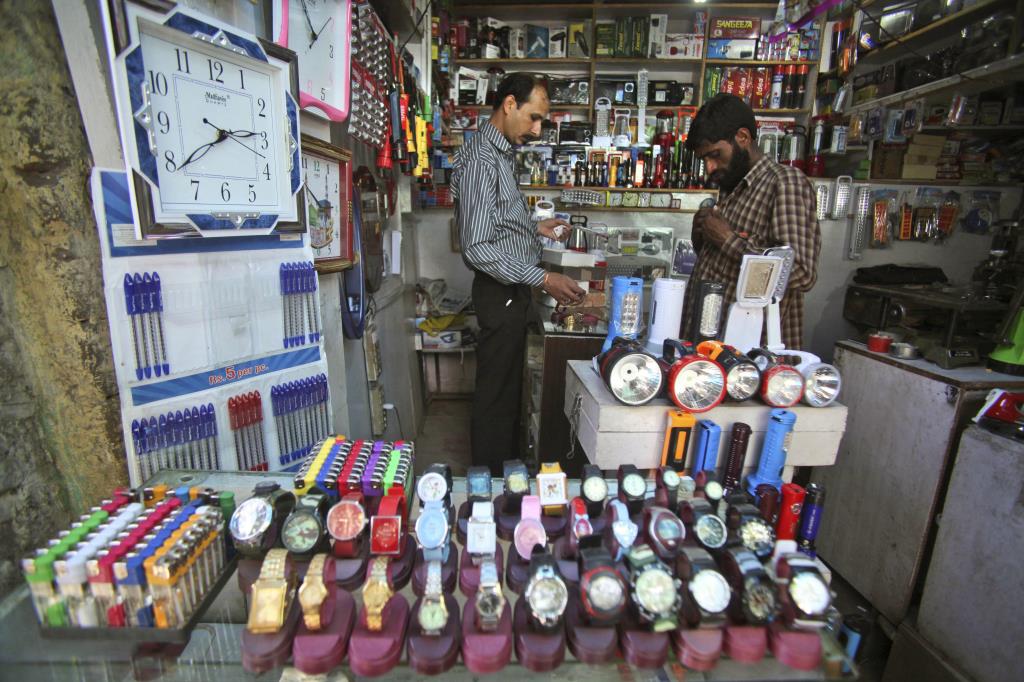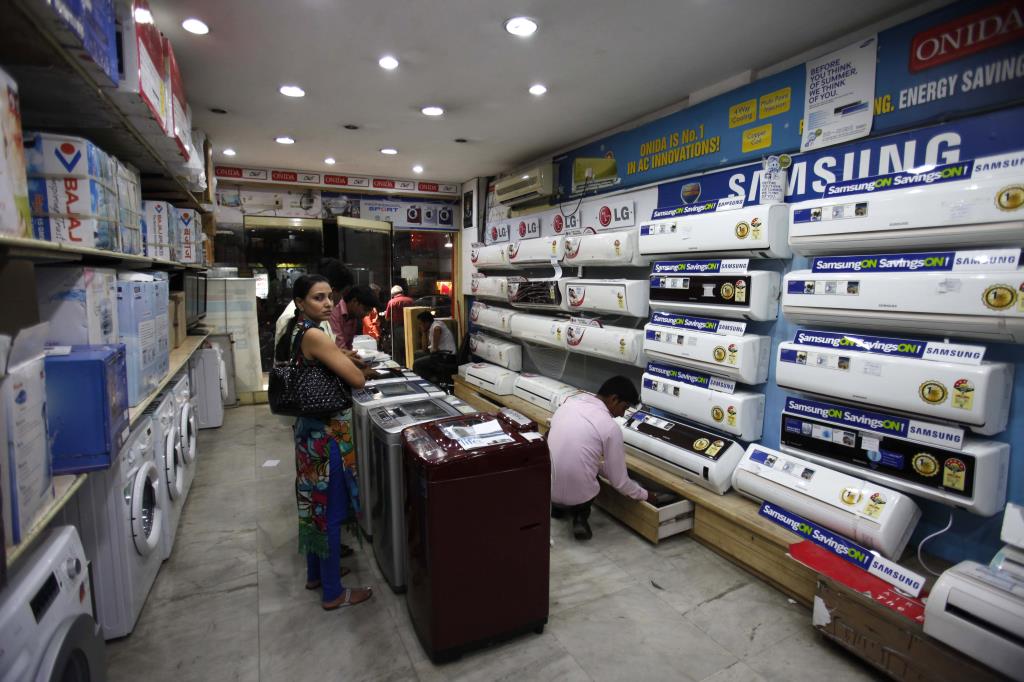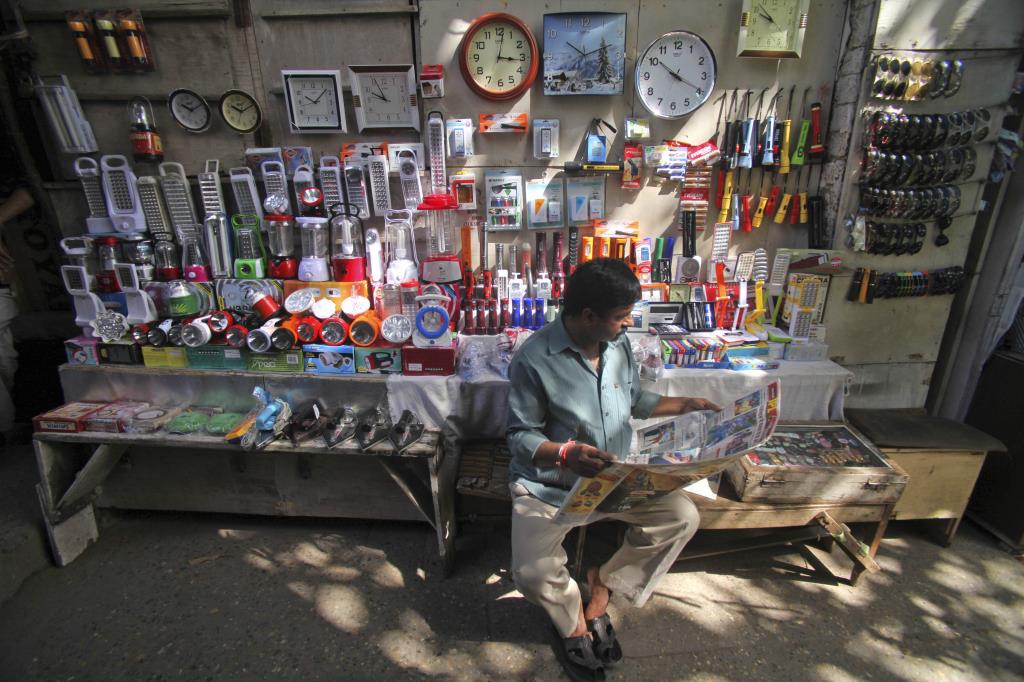April 8, 2013

April 8, 2013

India's economy could possibly see a six percent growth rate this year, fueled by domestic consumption, but the country may still fail to reach that level if it does not follow through on economic reforms. The growth forecast is an improvement over disappointing numbers last year but still far short of what India's economy needs to create enough jobs for its huge, youthful population.
Domestic consumption could boost India's slowing economy to 6 percent growth this year, but the country may still fail to reach that level if it does not follow through on reforms to encourage investment, the Asian Development Bank said Tuesday.
High inflation, a key concern that is hampering India's scope to jump start the economy with lower interest rates, is forecast to ease to 7.2 percent this year from 7.5 percent last year, the ADB's Asian Development Outlook said.
The growth forecast is an improvement over disappointing numbers last year but still far short of what Asia's third-largest economy needs to create enough jobs for its huge, youthful population.
Just a few years ago, India was seen as a rising economic power that could even rival China, with its economy expanding at rates of over 9 percent. However, growth last year slowed to its lowest rate in a decade, estimated by the government at 5 percent.
The slowing growth has been paired with persistently high inflation. High prices, especially for food, limit the central bank's scope to reduce interest rates, although the Reserve Bank of India last month made its second cut this year to a key lending rate.

A population of 1.2 billion makes India a potentially blockbuster market. The ADB said in its forecast that domestic consumption, led by increased agricultural wages plus the prospect of exports reviving along with the global economy, will likely give a boost to India's economy this year.
But that consumer demand is offset by increasingly hesitant investment blamed on regulatory snarls, overburdened infrastructure, laws limiting foreign investment in certain sectors and widespread corruption. India ranks a low 132 out of 195 countries on the World Bank's annual ease of doing business survey.
More than half of India's population is under 30 years old and some 13 million Indians reach working age each year. India's finance ministry estimates the country needs at least 8 percent growth each year to create enough new jobs.
The ADB said GDP growth has the potential to reach 6 percent this year and 6.5 percent in 2014, but only if it takes steps to attract more foreign investment.
"Revival of investment is extremely critical to return to a path of 8-plus percent growth," said ADB senior economist Abhijit Sengupta. "However the recent data does not show this is going to happen immediately," he said. "Data from last year shows there is continuous downward trend in the announcement of new projects and an increase in the amount of shelved projects."
The government recently has sought to encourage foreign investment through reforms in September including allowing more foreign investment in retail, aviation, broadcasting and insurance.

Those measures have already sparked a recent bump in investor interest. Malaysia's AirAsia in February announced a budget airline joint venture with India's Tata conglomerate. Swedish retail giant IKEA is moving ahead with plans to open dozens of stores across the country after the government relaxed restrictions on foreign retailers. Critics said the long-delayed arrival of foreign-owned big box retailers would damage Indian small businesses.
However, Sengupta said India must open up further if it hopes to regain its previous high rate of growth.
"These are only the first steps towards improving the investment climate. It is pretty clear that further reforms are required to turn the investment cycle around," he said.
Among the next reforms under consideration by the government are easing restrictions on foreign investment in India's insurance industry and pension funds. Both are now capped at 26 percent, and the proposal is to raise that to 49 percent, which could result in billions of dollars of new investment, according to the ADB's principal economist Rana Hasan.
A land acquisition bill that would ease the regulatory burdens for building roads, factories and other projects also is crucial in removing barriers to improving infrastructure and encouraging both domestic and foreign investment, he said.
Prime Minister Manmohan Singh last week promised a group of prominent Indian business leaders that the government would cut red tape and invest in badly needed infrastructure such as electricity and transport. He urged business leaders not to succumb to a "mood of negativism."
Courtesy: AP
















































































































